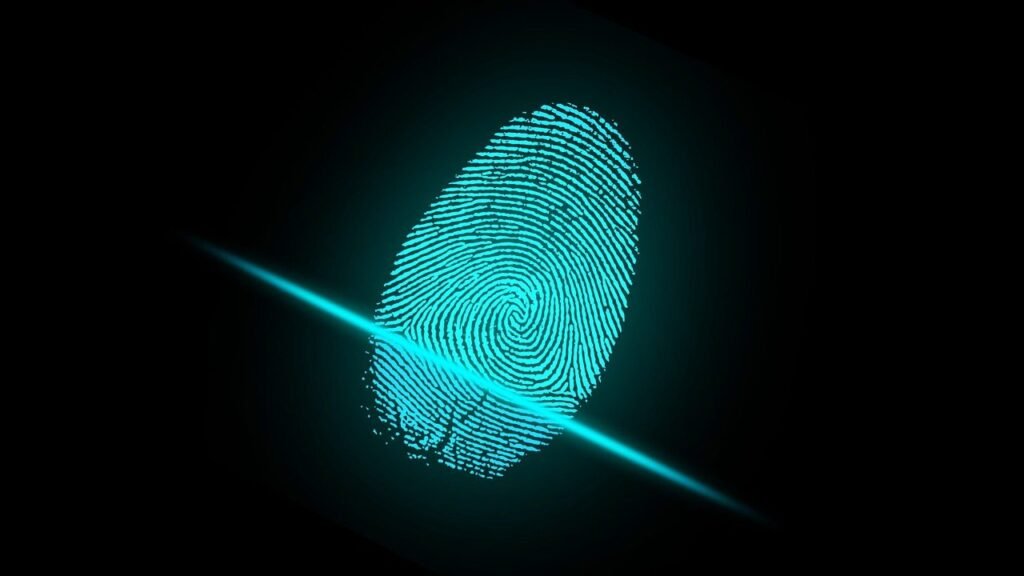Biometrics are biological measurements, or physical characteristics, that may be accustomed establish individuals. For example, fingerprint mapping, facial recognition, and tissue layer scans are all styles of biometric technology, however, these are simply the foremost recognized options.
Researchers claim the form of an ear, the manner somebody sits and walks, the veins in one’s hands, and even facial contortions are alternative unique identifiers. These traits outline life science.

Uses of Biometrics.
Biometrics are rising as a sophisticated layer to several personal and enterprise security systems. With the distinctive identifiers of your biology and behaviors, this could appear foolproof. However, biometric identity has created many cautious concerning its use as standalone authentication.
trendy cybersecurity is targeted at reducing the risks for this powerful security solution. ancient passwords have long been a degree of weakness for security systems. Biometrics aims to answer this issue by linking proof-of-identity to our bodies and behavior patterns.
Benefits.
They are for the most part used as a result of 2 major benefits:
The convenience of use: bioscience is perpetual with you and can’t be lost or forgotten.
Tough to steal or impersonate: bioscience can’t be taken sort of a parole or key can.
whereas these systems aren’t perfect, they provide plenty of promise for the long run of cybersecurity.
Types of biometrics.
Biometrics are labeled because of the manner it is used, these biometrics are used as passwords or security. biometrics are classified as Voice Recognition, Fingerprint Scanning, Facial Recognition, Iris Recognition, and Heart-Rate Sensors. They are mainly classified as
- Biological biometrics
- Morphological biometrics
- Behavioral biometrics
Biological statistics use traits at a genetic and molecular level. These could embrace options like deoxyribonucleic acid or your blood, which could be assessed through a sample of your body’s fluids.
Morphological biometrics are the additional physical traits like your eye, fingerprint, or the form of your face that may be mapped to be used with security scanners.
Behavioral biometrics are supported patterns distinctive to every person. however, you walk, speak, or maybe kind on a keyboard can be a sign of your identity if these patterns are tracked.
How does biometric security work?
Physical characteristics are comparatively fastened and personal, even in the case of twins. every person’s distinctive biometric identity is wont to replace or a minimum augments word systems for computers, phones, and restricted access rooms and buildings.
Once biometric information is obtained and mapped, it’s then saved to be matched with future makes an attempt at access. Most of the time, this data is encrypted and kept inside the device or on a foreign server. life science scanners are hardware used to capture biometrics for verification of identity. These scans match against the saved information to approve or deny access to the system.
Risks of Biometrics.
Risks of the time of day and also the locations wherever they generally use their phones. If this information gets out, it might doubtless be utilized by stalkers or, in the case of celebrities, by tabloid journalists. Foreign powers might use the data in an effort to influence public opinion.
Storing biometric data on a tool – rather like the iPhone’s TouchID or Face ID – is taken into consideration safer than storing it with a service provider, even once the knowledge is encrypted.
That risk is analogous to it of a countersign database, among that hackers would possibly breach the system and steal information that’s not effectively secured. If a countersign is compromised, it’s changed. Biometric knowledge, in contract, remains identical forever.
How secure is biometric data?
The security of the identification information is vitally important, even quite the protection of passwords, since passwords will be simply modified if they’re exposed. however, biometrics passwords are unchangeable.
The discharge of this or alternative biometric info might place users at permanent risk and make important legal exposure for the corporate that loses the data. each company is chargeable for its own security decisions. you cannot source compliance, however, you’ll be able to cut back the price of compliance, and also the attainable repercussions of a leak, by selecting the proper vendor.
Encryption isn’t an absolute guarantee of security, of course, if the applications or users that are licensed to access the info are themselves compromised. However, there is a handful of the way that firms will avoid keeping even encrypted authentication data on their servers.
